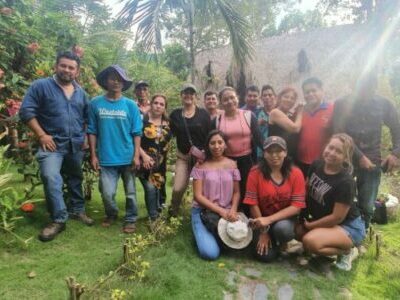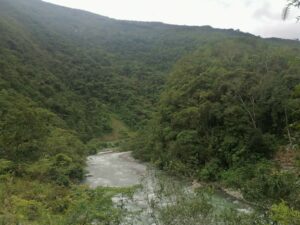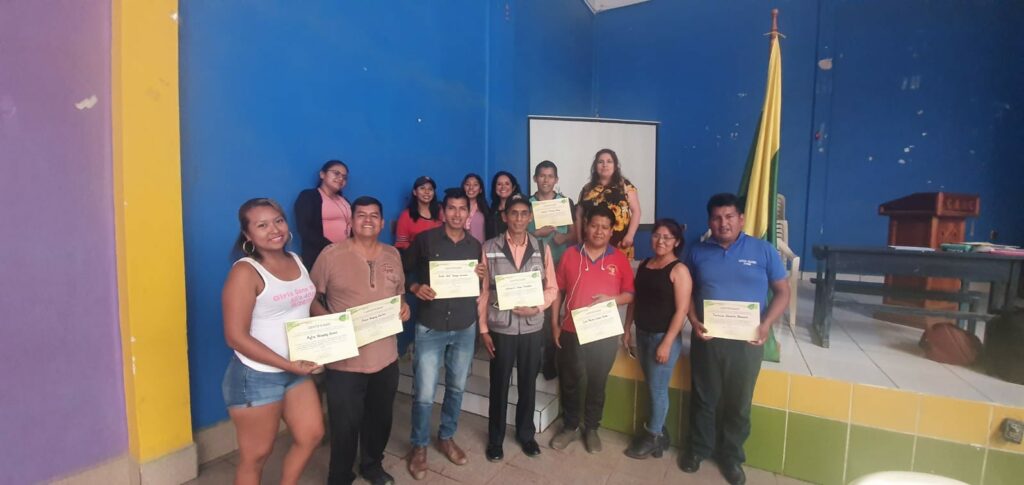Journalism Workshop In Bolivia Promotes the Protection of Biodiversity Conservation Corridors
May 14, 2022
 In 2020, our sister organization on the ground in Bolivia, Conservación Amazónica-ACEAA, organized a journalism workshop to promote the ecosystem services and threats faced by the Madidi-Pilón Lajas-Cotapata Conservation Corridor. Though this conservation corridor is located in the biodiversity hotspot of the tropical Andes, it faces risks from encroaching illegal miners and loggers. Thus, the course, “Capacity-Building in Communication for Biodiversity Conservation in the Madidi-Pilón Lajas-Cotapata Conservation Corridor of Bolivia”, generated interest among journalists and university students both locally and abroad.
In 2020, our sister organization on the ground in Bolivia, Conservación Amazónica-ACEAA, organized a journalism workshop to promote the ecosystem services and threats faced by the Madidi-Pilón Lajas-Cotapata Conservation Corridor. Though this conservation corridor is located in the biodiversity hotspot of the tropical Andes, it faces risks from encroaching illegal miners and loggers. Thus, the course, “Capacity-Building in Communication for Biodiversity Conservation in the Madidi-Pilón Lajas-Cotapata Conservation Corridor of Bolivia”, generated interest among journalists and university students both locally and abroad.
 The Madidi-Pilón Lajas-Cotapata Conservation Corridor is a combination of three vast protected areas in Bolivia, the Madidi National Park, the Pilón – Lajas Biosphere Reserve, and the Cotapata National Park. These areas create a corridor that protects and connects more than 5.8 million acres of Amazonian forests, covering a mosaic of Andean rainforests, mainland Amazonian forests, mixed mountain and highland ecosystems, and lowlands. Corridors bridging patches of habitat that would otherwise be cleared are important for wildlife because native flora and fauna have better access to natural resources, which are normally scattered across a landscape and change based on seasons and climate. Corridors also protect essential water resources from contamination and pollution.
The Madidi-Pilón Lajas-Cotapata Conservation Corridor is a combination of three vast protected areas in Bolivia, the Madidi National Park, the Pilón – Lajas Biosphere Reserve, and the Cotapata National Park. These areas create a corridor that protects and connects more than 5.8 million acres of Amazonian forests, covering a mosaic of Andean rainforests, mainland Amazonian forests, mixed mountain and highland ecosystems, and lowlands. Corridors bridging patches of habitat that would otherwise be cleared are important for wildlife because native flora and fauna have better access to natural resources, which are normally scattered across a landscape and change based on seasons and climate. Corridors also protect essential water resources from contamination and pollution.
After a standstill due to the pandemic, at the beginning of 2022 the course was restarted to focus more on rural journalists, since the original course tailored to journalists in cities in universities.
Bolivian biologist Andrea Morales and environmental investigative journalist Jimena Mercado presented on the Corridor’s environmental, biological, and technical aspects, as well as shared the communication potential and journalistic approach. “It has definitely been something new for attendees, the topic of biodiversity conservation. Few were knowledgeable about what a corridor was. So I think the issue of threats to protected areas has been a powerful lesson for them….Although they  are in contact in protected areas with environmental issues, they were not handling the terms correctly,” says Morales.
are in contact in protected areas with environmental issues, they were not handling the terms correctly,” says Morales.
Luis Arteaga, Technical Director of Conservación Amazónica-ACEAA, points out that the course made it possible to explore concerns noted by students and journalists themselves. For example, Vicky Gonzáles, who was an attendee from Río Tv and based in Rurrenabaque, a small town on the Beni River in the Bolivian Amazon, said that, “We know what is happening, but here is where that information stays. What I liked the most is knowing that there are institutions that can help us disseminate this information internationally.”
To learn more about this initiative, click here.

